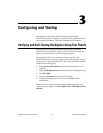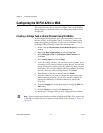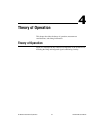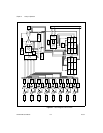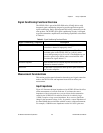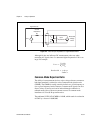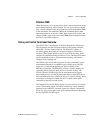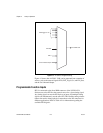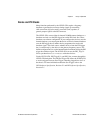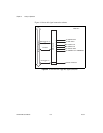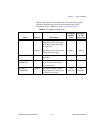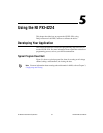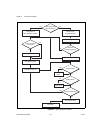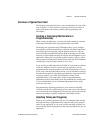Chapter 4 Theory of Operation
© National Instruments Corporation 4-5 NI PXI-4224 User Manual
Effective CMR
When the frequency of a common-mode signal is known and outside of the
measurement frequency band of interest, you can use an analog or digital
filter, or both, to further reduce the residual error left from the finite CMRR
of the instrument. The combined CMR of the instrument and the filter
attenuation results in an effective CMR. When expressed in decibels, the
effective CMR is equal to the sum of the CMRR and the attenuation due to
the filter at a specified frequency.
Timing and Control Functional Overview
The NI PXI-4224 is based on the NI E Series DAQ device architecture.
This architecture uses the NI data acquisition system timing controller
(DAQ-STC) for time-related functions. The DAQ-STC consists of
two timing groups that control AI and general-purpose counter/timer
functions. These groups include a total of seven 24-bit and three 16-bit
counters and a maximum timing resolution of 50 ns. The DAQ-STC makes
possible applications such as equivalent time sampling, and seamless
changing of the sampling rate.
The NI PXI-4224 uses the PXI trigger bus to easily synchronize several
measurement functions to a common trigger or timing event. The PXI
trigger bus is connected through the rear signal connector to the
PXI chassis backplane. The DAQ-STC provides a flexible interface for
connecting timing signals to other devices or external circuitry. The
NI PXI-4224 uses the PXI trigger bus to interconnect timing signals
between PXI devices, and the programmable function input (PFI) pin on
the front SMB connector to connect the device to external circuitry. These
connections are designed to enable the device to both control and be
controlled by other devices and circuits.
The DAQ-STC has internal timing signals you can control by an external
source. These timing signals also can be controlled by signals internally
generated to the DAQ-STC, and these signals are software configurable.
Figure 4-3 shows an example of the signal routing multiplexer controlling
the AI CONVERT CLOCK signal.




